5% to 95% Green Cover: How a Delhi Park Was Turned Into a Lush Forest, Boosting Water Table & Air Quality!
Once an abandoned and neglected park on a four-acre stretch of land, it is today a lush green area with more than 300 species of flora in the range of 10,000 native fruit-bearing trees, herbs, shrubs, host and nectar plants, air detox plants as well as vegetables!
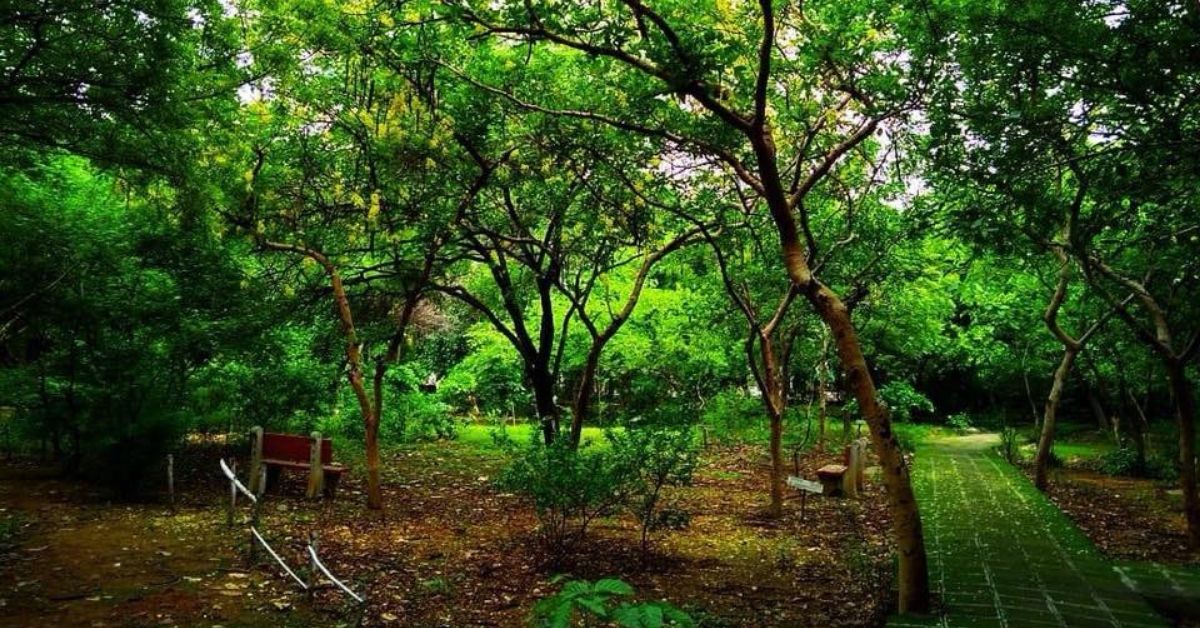
Before you scroll down any further, I want you to look at the two satellite images below. The first is from 2009, an aerial view of what is now called the Airshed Park in Vasant Kunj. The second image is from 2019.
See the difference in the green cover?
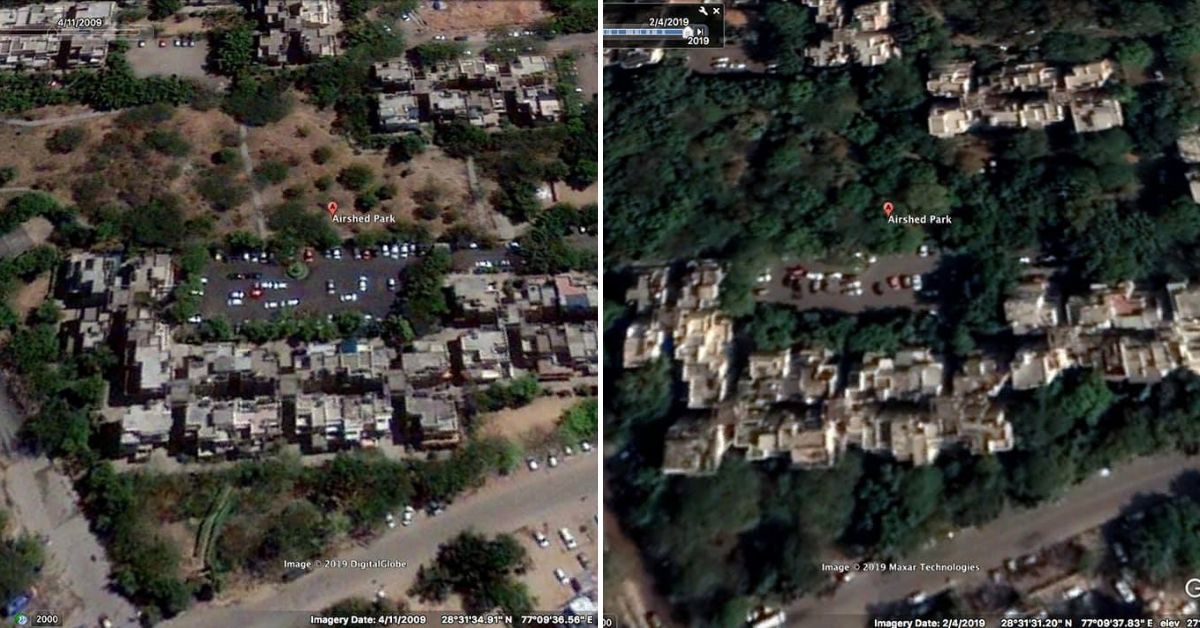
Once an abandoned and neglected park on a four-acre stretch of land, it is today a lush green area with more than 300 species of flora in the range of 10,000 native fruit-bearing trees, herbs, shrubs, host and nectar plants, air detox plants as well as vegetables!
What these two images reflect is the impact a community can create when they join hands to revive and reclaim a dying park.
The Better India (TBI) got in touch with the team behind this spectacular initiative, which has been instrumental in creating five such urban forests in the national capital. Speaking to TBI, Vimlendu Jha, founder of the city-based NGO, Swechha India, recalls,
I moved to Vasant Kunj in 2004-2005. In these years, we were actively working for the issues that plagued the river that runs through the heart of the capital, Yamuna. The park was not very far from where I resided. When I walked around the park, I realised it was abandoned and deserted. Incidentally, this was also the time when we were actively working on our annual campaign ‘Monsoon Wooding’ where we plant, promote and protect trees through citizen engagement. So we thought, why not revive this abandoned park?

In 2007, Vimlendu and his team decided to start small and planted about 100 plants. Jha asked his gardener to take care of the batch to ensure they survived. He shelled out money from his pocket for the same. When the first year displayed excellent results, Vimlendu and his team continued to add 100-200 plants every year to the park.
It was three years ago (in 2016) when they decided to formally adopt the park from the Municipal Corporation of Delhi (MCD) and have, ever since, been actively working on developing the space into an ‘Airshed’ that would act as the lungs of the area.
Vimlendu wrote a proposal to The American Centre about making the park a model for other communities to follow and was able to gather funding to execute it.
Today, the results are out for everyone to see. A Google earth view now shows not only an increase in the density of green but the people can also feel the improved air quality in the neighbourhood. The temperature in the area has come down by three-four degrees when compared to the rest of the city, thanks to the blooming mini-urban forest.
From a mere five per cent, the park today has 90 per cent green cover.
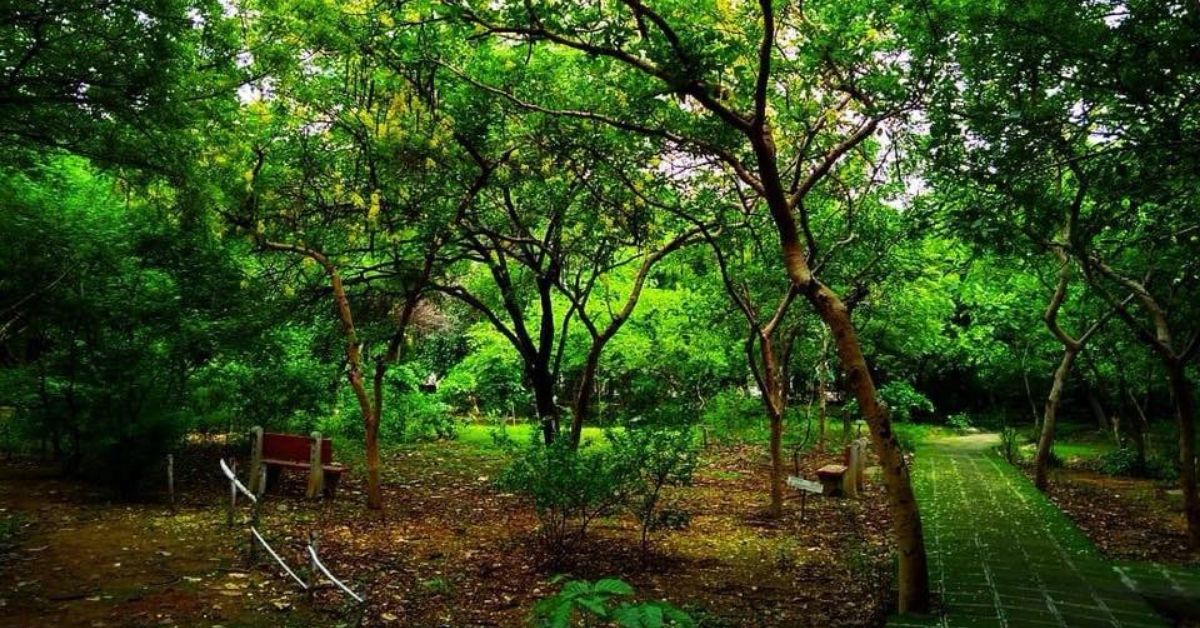
The verdant green airshed park also boasts of a butterfly garden, a kitchen garden which grows vegetables for the gardeners, drivers and other workers in the neighbourhood, and a 400-meter long trail. It also has its compost pit where dead and fallen leaves are converted into 400-500 kgs of organic manure every month to nurture plants, both old and new.
Some of the trees include orchid, burflower, black mulberry, sacred fig, sausage tree, Indian gooseberry, banyan, guava, Gulmohar, pomegranate, jujube, etc. Other shrubs and herbs (both medicinal and culinary) include holy basil, sweet basil, curry leaf, hibiscus, fountain grass, lemon grass, Indian asparagus, cinnamon basil, long pepper, turmeric, stevia, cardamom, etc.
The shade detox garden includes varieties like syngonium, spider plant, money plant, aloe vera, other indoor ferns, etc. Vegetables include sweet potatoes, bitter gourd, lady finger, aubergine, tomatoes, pumpkin, spinach, fenugreek, etc.
Imagine if this model is replicated, in the other 8,000 government-run parks in Delhi, what then would the scale of change be?
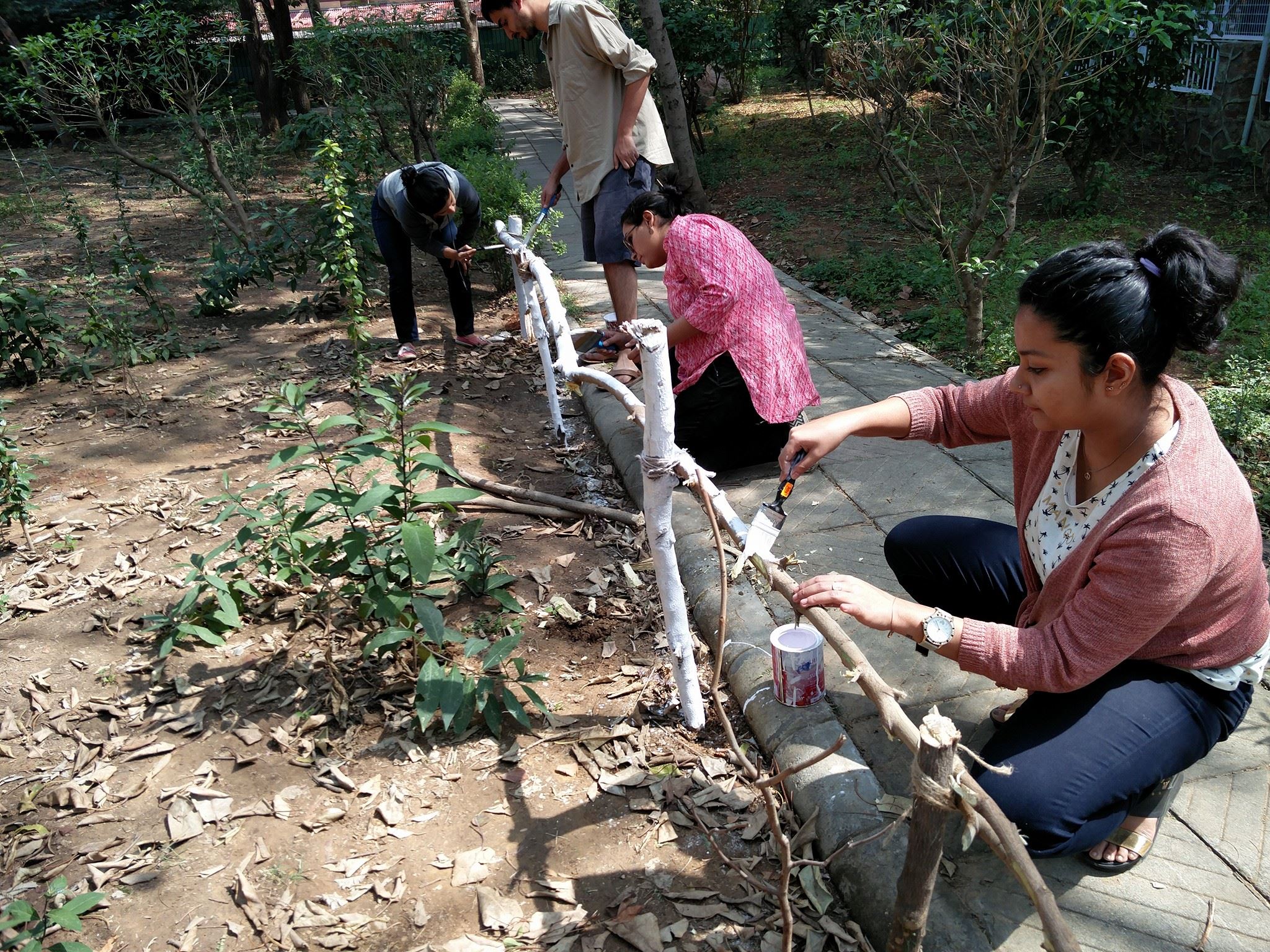
“Many of these parks are abandoned and in a neglected state due to a shortage of staff and financial stress on government departments to maintain them. Vasant Kunj has about 40 small and medium-sized parks with only four horticultural gardeners to look after them? How is it humanly possible to ensure their survival? While it is important to demand action from the government, we, as citizens, have a civic responsibility too. The model we have created at Vasant Kunj proves how, with limited resources, community participation and good intent a community can work together to convert small pieces of abandoned land into air sheds or air catchment areas in their cities.”
While planting is no rocket science, Vimlendu adds how growing native varieties require care and maintenance. The joy is not planting but in ensuring that it survives. And therefore, the first year is critical. Now the team has given the park to the MCD.
“Even if, for some reason, the government isn’t able to maintain the park, it won’t be affected, because over the last decade the trees in the park have become self-sufficient to care for themselves.”
You May Also Like: Rajasthan Makes Planting Trees, Digging Ponds Compulsory For Engineering Students!
Every year, through the Monsoon Wooding campaign, Swechha India plants anywhere between 5,000 to 10,000 trees.
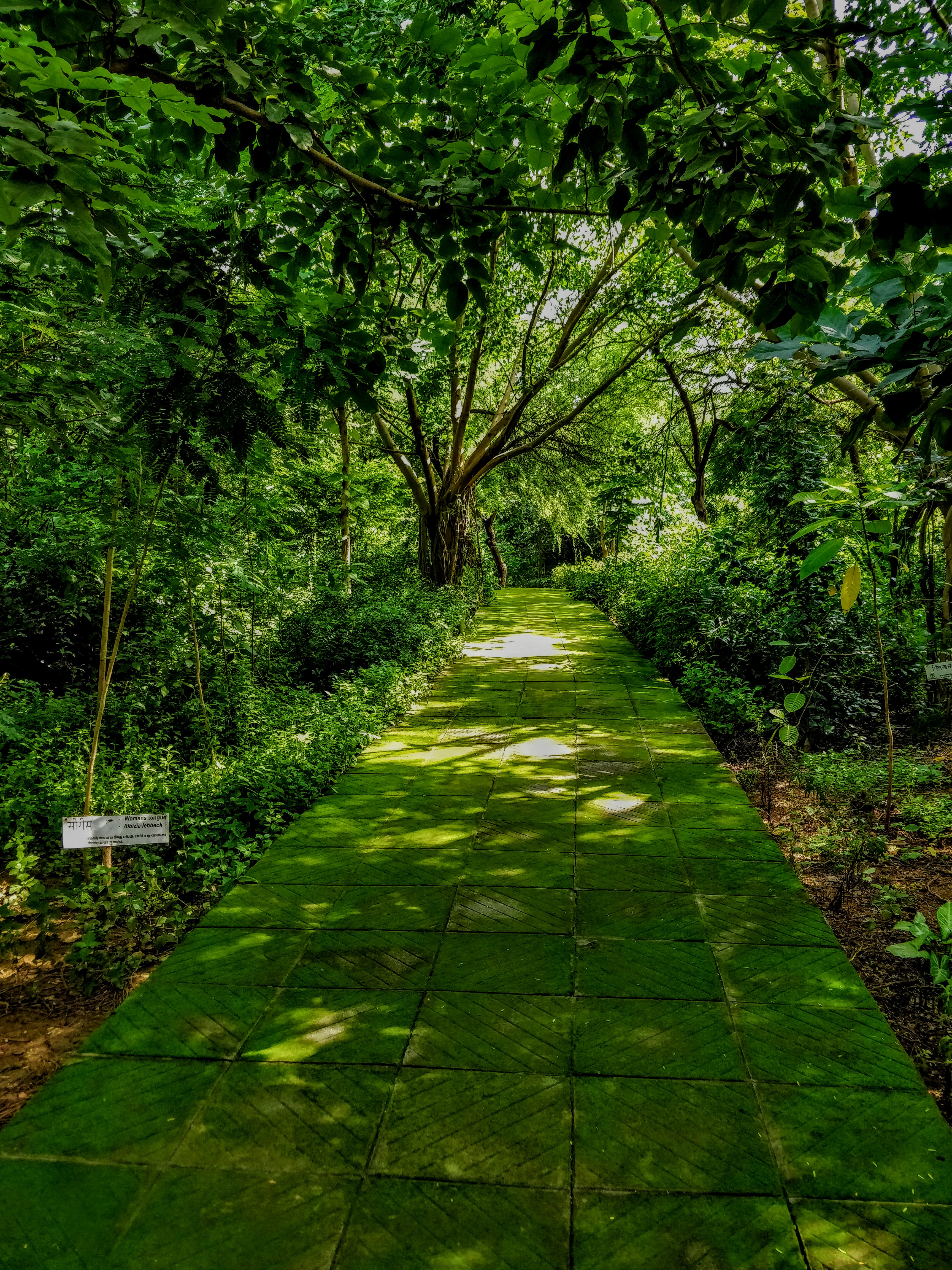
They have worked with hundreds of school and university students, senior citizens, community members, and several international volunteers to build and maintain additional five native fruit forests, two upcycled butterfly gardens created using waste material from the schools, a couple of herb gardens within a small public park in Gurgaon and a shade air detox garden.
If you want to help further their work, support and contribute to their crowdfunding campaign.
If this story inspired you, get in touch with Vimlendu at [email protected]
(Edited by Saiqua Sultan)
Image credits: Swechha India
Like this story? Or have something to share?
Write to us: [email protected]
Connect with us on Facebook and Twitter.
If you found our stories insightful, informative, or even just enjoyable, we invite you to consider making a voluntary payment to support the work we do at The Better India. Your contribution helps us continue producing quality content that educates, inspires, and drives positive change.
Choose one of the payment options below for your contribution-
By paying for the stories you value, you directly contribute to sustaining our efforts focused on making a difference in the world. Together, let’s ensure that impactful stories continue to be told and shared, enriching lives and communities alike.
Thank you for your support. Here are some frequently asked questions you might find helpful to know why you are contributing?


This story made me
-
97
-
121
-
89
-
167











